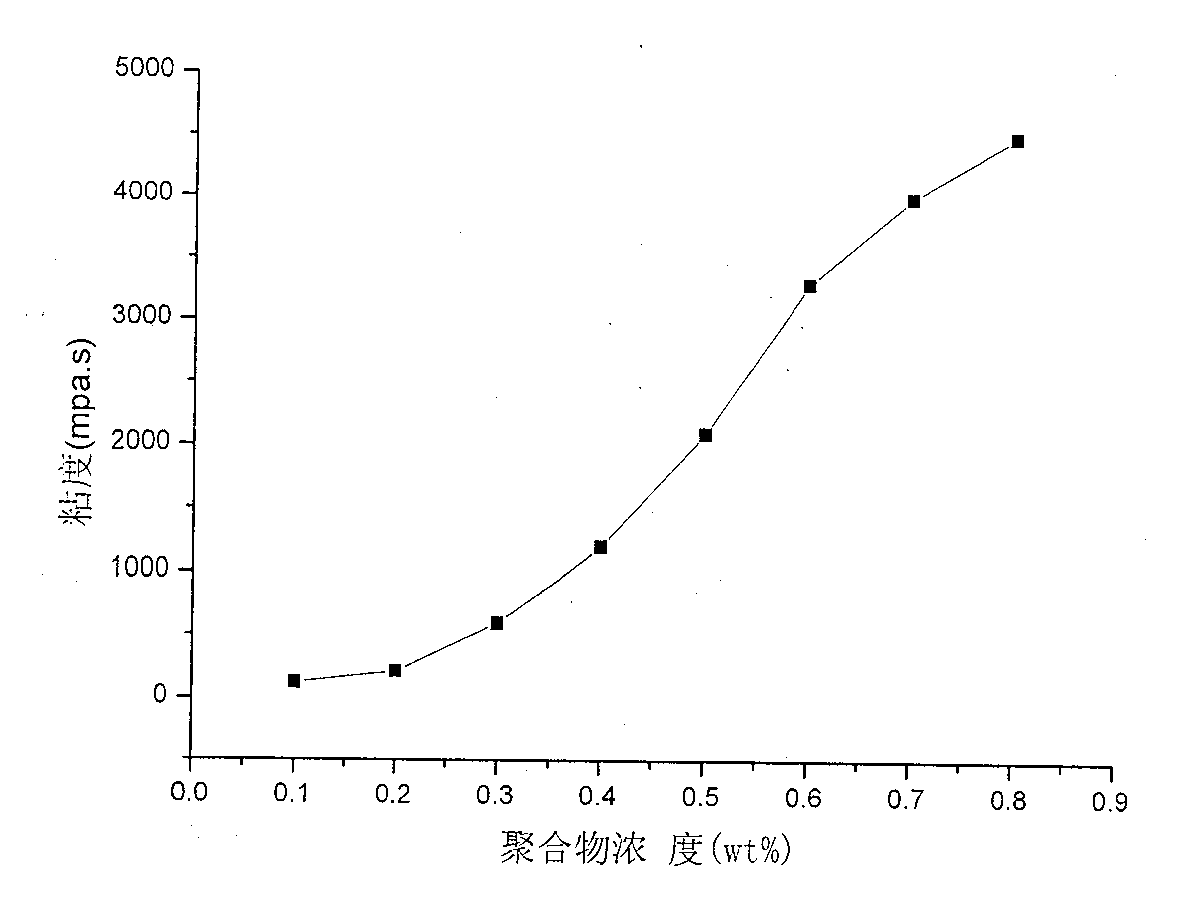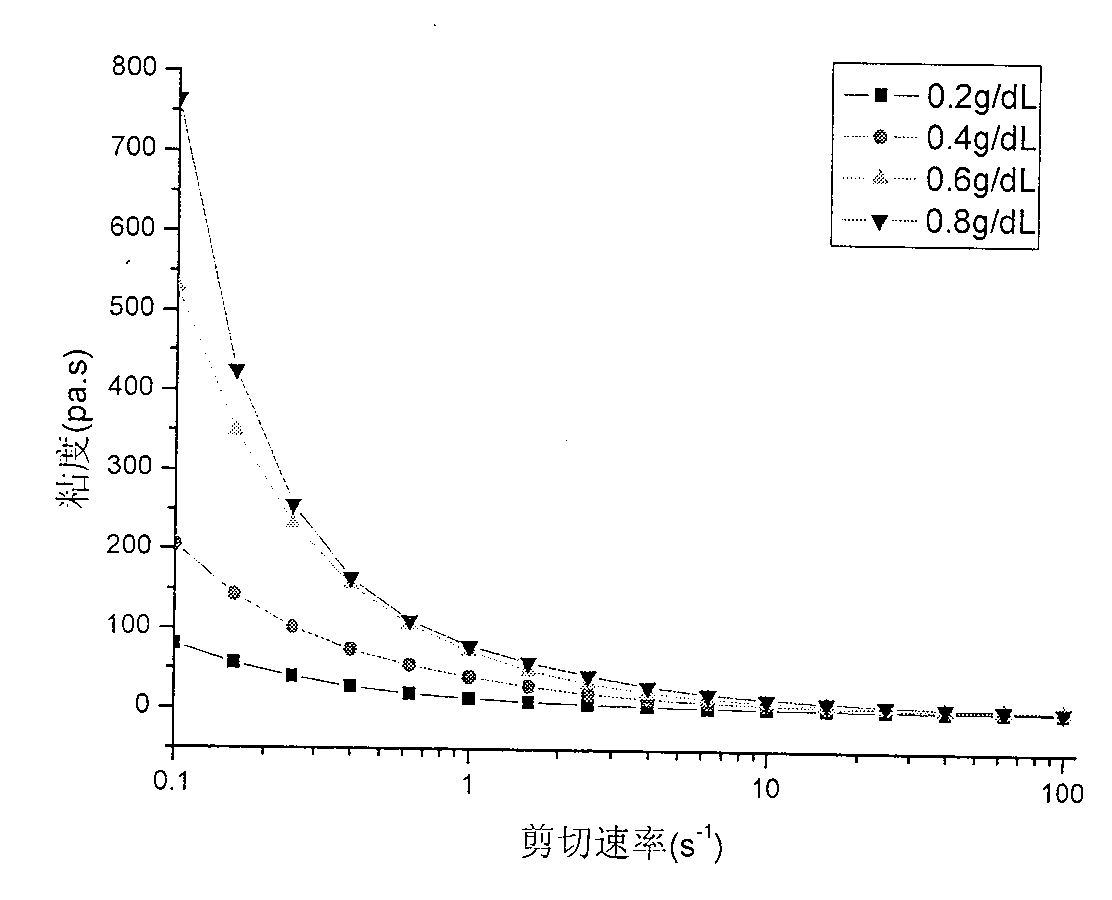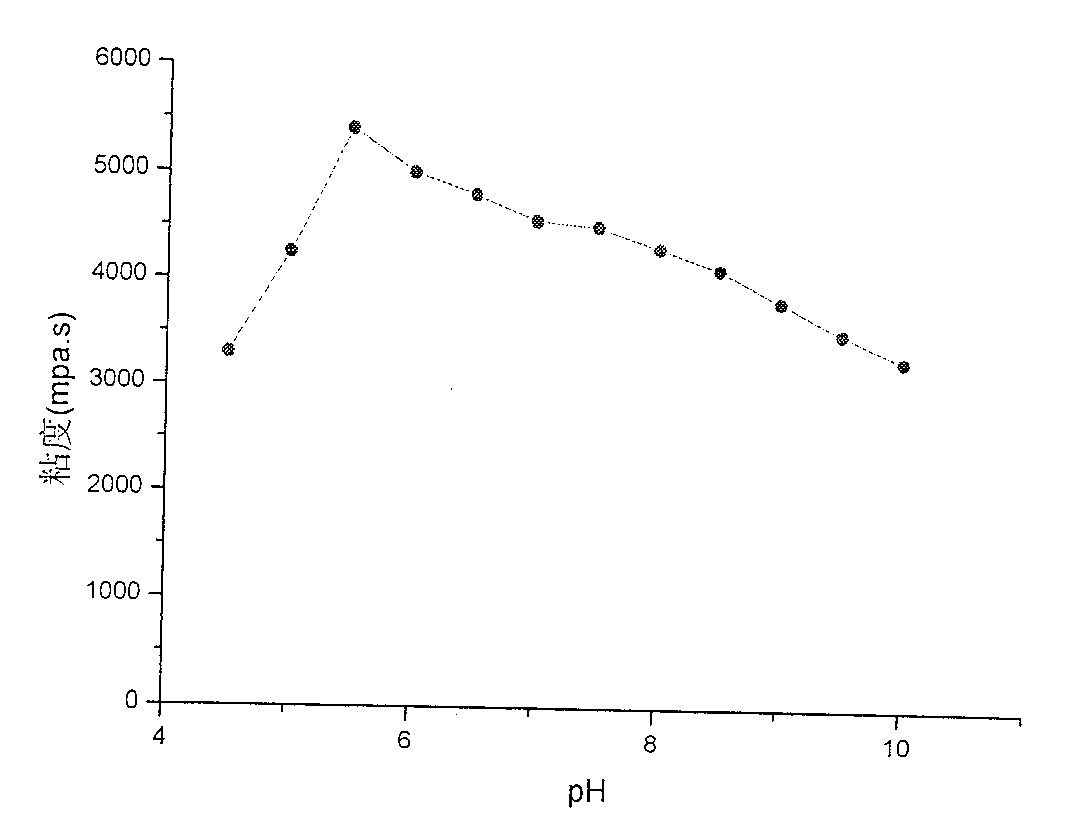Siloxane group containing polyacrylic acid material and synthesizing technique thereof
The technology of siloxane acrylate and siloxane group is applied in the field of polyelectrolyte preparation, which can solve the problems of solvent toxic operation, product pollution, environmental pollution and the like, and achieve the effects of easy polymerization reaction, easy separation and purification, and low price.
- Summary
- Abstract
- Description
- Claims
- Application Information
AI Technical Summary
Problems solved by technology
Method used
Image
Examples
Embodiment approach 1
[0033] The synthetic technology that the present invention proposes in supercritical carbon dioxide contains siloxane group acrylic acid material, raw material acrylic acid (AA) is analytically pure, decompression distillation removes polymerization inhibitor; Initiator is azobisisobutyronitrile (AIBN) , recrystallized with methanol; siloxane monomer vinyltriethoxysilane (Wuda Organic Silicon Company), not processed.
[0034] Synthetic technical steps and processing conditions are as follows:
[0035] step one:
[0036] Weigh 2.1g of acrylic acid, 0.05g of vinyltriethoxysilane, 0.25g of butyl acrylate, and 0.021g of azobisisobutyronitrile into a 20mL stainless steel autoclave to seal;
[0037] Step two:
[0038] First inject carbon dioxide to about 5MPa, pause for 30 seconds, slowly deflate and discharge the air in the kettle, repeat 2 to 3 times; then inject carbon dioxide with a high-pressure metering pump to a pressure of 16MPa, close the intake valve; start the magnetic ...
Embodiment approach 2
[0043] The raw material acrylic acid (AA) is analytically pure, and the polymerization inhibitor is removed by distillation under reduced pressure; the initiator is azobisisobutyronitrile (AIBN), which is recrystallized with methanol; octadecyl acrylate is purchased from Aldrich Company without treatment; Alkane monomer vinyl triethoxysilane (Wuhan Silicone Co., Ltd.), not processed;
[0044] Synthetic technical steps and processing conditions are as follows:
[0045] step one:
[0046] Weigh 2.1g of acrylic acid, 0.021g of azoisobisbutyronitrile, 0.2333g of octadecyl acrylate, and 0.04g of vinyltriethoxysilane into a 20mL stainless steel autoclave to seal;
[0047] Step two:
[0048] First inject carbon dioxide to about 6MPa, pause for 10 seconds, slowly deflate and discharge the air in the kettle, repeat 2 to 3 times; then inject carbon dioxide with a high-pressure metering pump to a pressure of 14MPa, close the intake valve; start the magnetic stirrer, and at the same tim...
Embodiment approach 3
[0053] The raw material acrylic acid (AA) is analytically pure, and the polymerization inhibitor is removed by distillation under reduced pressure; the initiator is azobisisoheptanonitrile, which is recrystallized with methanol; Purchased from Aldrich Company without processing;
[0054] Synthetic technical steps and processing conditions are as follows:
[0055] step one:
[0056] Weigh 2.0g of acrylic acid, 0.021g of azobisisoheptanonitrile, 0.2333g of hexadecyl acrylate, and 0.05g of vinylhexyltrimethoxysilane into a 20mL stainless steel autoclave to seal;
[0057] Step two:
[0058] First inject carbon dioxide to about 6MPa, pause for 20S, slowly deflate and discharge the air in the kettle, repeat 2 to 3 times; then inject carbon dioxide with a high-pressure metering pump to a pressure of 15MPa, close the intake valve; start the magnetic stirrer, and at the same time Gradually raise the temperature to 60°C and react for 6 hours. After the reaction is over, cool the reac...
PUM
 Login to View More
Login to View More Abstract
Description
Claims
Application Information
 Login to View More
Login to View More - R&D
- Intellectual Property
- Life Sciences
- Materials
- Tech Scout
- Unparalleled Data Quality
- Higher Quality Content
- 60% Fewer Hallucinations
Browse by: Latest US Patents, China's latest patents, Technical Efficacy Thesaurus, Application Domain, Technology Topic, Popular Technical Reports.
© 2025 PatSnap. All rights reserved.Legal|Privacy policy|Modern Slavery Act Transparency Statement|Sitemap|About US| Contact US: help@patsnap.com



